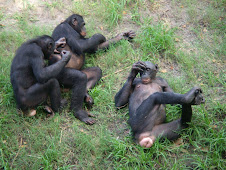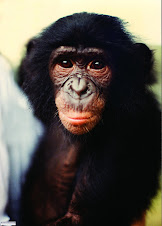 In Zaire (now the Democratic Republic of the Congo, or DRC), I never saw an active human case of monkeypox. Monkeypox was so rare that the World Health Organization (WHO) had only investigated the clinical course and epidemiology of 300 cases during sixteen years of surveillance, most of them in Zaire.
In Zaire (now the Democratic Republic of the Congo, or DRC), I never saw an active human case of monkeypox. Monkeypox was so rare that the World Health Organization (WHO) had only investigated the clinical course and epidemiology of 300 cases during sixteen years of surveillance, most of them in Zaire.The poster above was used to illustrate the important signs of monkeypox to African health workers. Two differences between it and smallpox was that monkeypox had pox lesions on the palms of the hands and bottoms of the feet, as well as swollen lymph glands, unlike smallpox.
This zoonotic disease (any illness that can be transmitted from animals to man -- or from man to animals), at first thought to be "new," had actually been smoldering in the African tropics for thousands of years. When smallpox was eradicated in the late '70s, the lookalike monkeypox surfaced. As a Peace Corps volunteer, my "job" with WHO was to try and find out what animals carried the virus as the wild reservoir.
Monkeypox became important to Americans in 2003 when it surfaced in pet prairie dogs that had been contaminated by a shipment of African rodents destined for the pet trade.
Photo by M. Szczeniowski, WHO













No comments:
Post a Comment